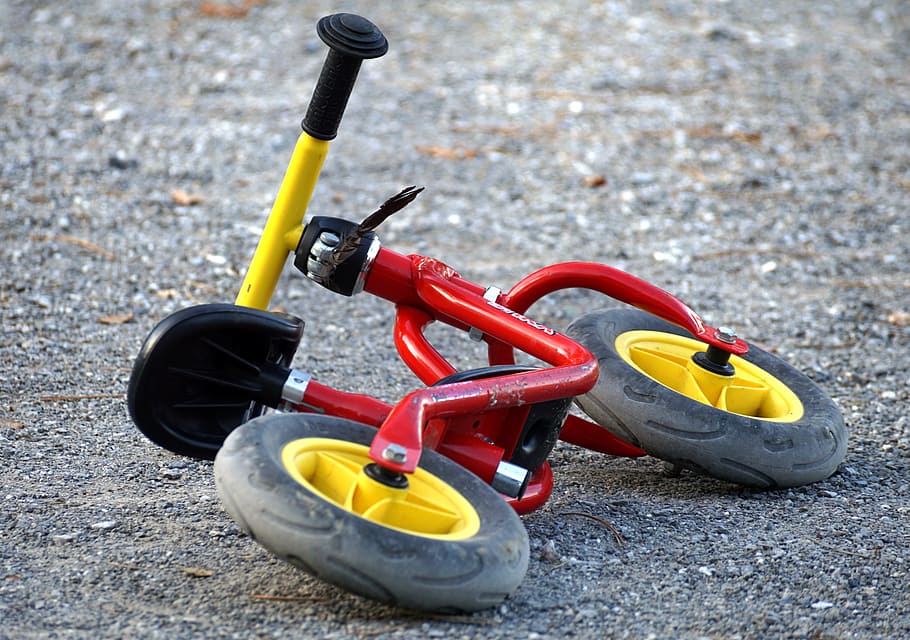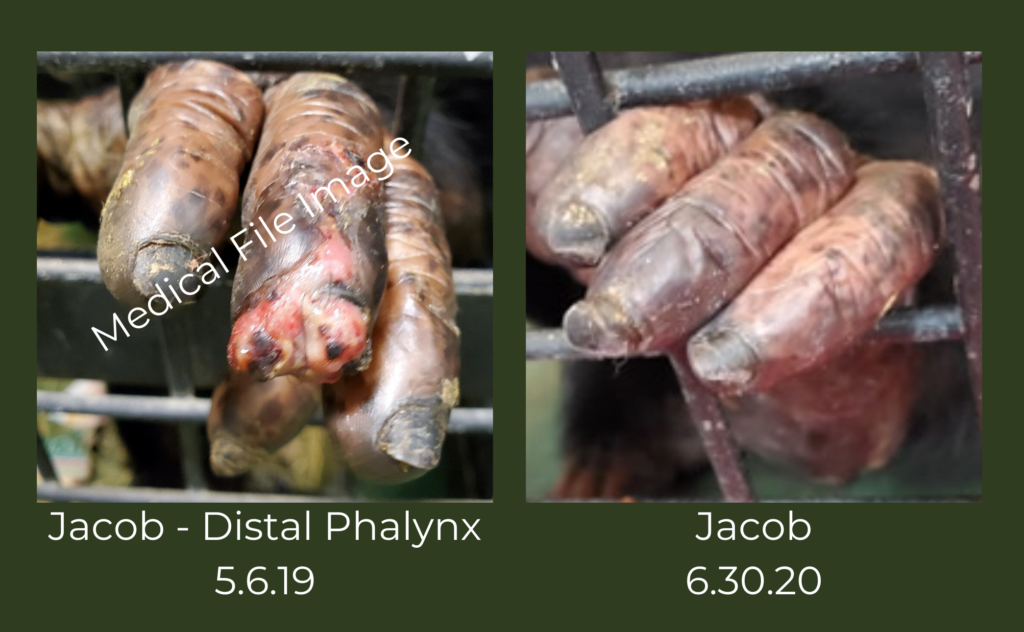
Nails Do Grow Back

By Joseph Elliot
When I was six, I had a red and yellow Big Wheel. I would ride that bike up and down the road I lived on. One balmy afternoon I was pumping my little legs as fast as I could going up a hill when suddenly I felt a tearing pain in my left index finger. I somehow got my fingernail close to the steering wheel mount and it was ripped off. I remember leaving the bike in the road and running home screaming my head off. I went to the ER that night and left with a large gauze wrap around my finger.
I was reminded of this story of my own finger injury as recently, people have been asking about a photo they have seen circulating from an injury to a chimp’s toe.
Battle Scars
When I started to work with chimps back in 2008, I realized very quickly that they have a tendency to have minor wounds on their body at almost all times. By wounds I mean small scratches or cuts. These wounds heal within days and often within a week you can’t even see the injury anymore.
Q. Is this normal? A. Yes it is, physical conflict is a normal part of chimpanzee society.
A chimp that is playing and having a good time builds excitement levels that reach a certain threshold where it can sometime becomes aggressive behavior. Play then turns into chimps smacking each other. They are so strong that when their hands come down for a smack, they may nick each other with their fingernails. Cuts and scratches like that usually do not need any kind of medical intervention.
Sometimes a bigger wound can occur – like a fingernail might get pulled off or even the tip bitten off. This can occur for any number of reasons in addition to aggression from other chimps, such as displaying with objects, climbing, and simple accidents.
“I swear, it doesn’t hurt”
Chimps, like most wild species, hide their pain from us. This is important when your society is based on hierarchy, the last thing a high-ranking, or even a low-ranking, individual wants to show is pain. If a chimpanzee is clearly holding their finger in an abnormal way, or we can see the injury plainly, then the veterinarian might prescribe an over the counter non-steroidal anti-inflammatory drugs (NSAID) for pain relief even if the chimpanzee himself is not showing any signs of pain[1].
Some people might question if that is enough pain management. Through personal injury and experience I had a doctor explain pain management to me in a way that makes sense. When it comes to pain you want to dull it to the point of comfort but not necessarily get rid of it entirely. You think to yourself “I am in pain why can’t I take something to make it go away?”
The answer is pretty simple. The chimps are constantly moving around. If an animal is constantly in motion the last thing you would want is for them is to not recognize at all that they are injured. If you break your hand and you are medicated so you no longer feel some pain, you are going to forget that your hand is broken and you are going to try to use it, which in the long run could cause you to further damage the already injured hand.

Extra Attention
I got a lot of sympathy from my classmates and teachers when they saw my bandaged finger. I of course, as any six-year old would do, milked that injury for all it was worth. Slowly, I could see my nail growing back (kind of cool). It took a few months but eventually I had a brand-new nail.
As close as chimpanzees are to humans in our DNA, their response to injuries and medical treatments is vastly different – they heal incredibly fast. In Jacob’s case, after he injured his toe, he was “back to normal” in just six days. For Jacob, who is a young male that likes to push boundaries in his group, that means he was back to getting in trouble. Much like me when I was that same developmental age.
Some of the chimps do like a little extra attention when they get an injury and they usually eagerly show us their new scrape or cut when they occur. We photograph and document these in their official medical records and provide them medical care accordingly.
But we don’t usually share photos focused on injuries on social media; would you want every nick, bruise, and scrape your child gets shared with the entire world to see? Worse, would you want their medical records shared with strangers? I don’t have human kids, and I look at the chimps as my responsibility, shared of course with my team of colleagues, and doing what is best for them is always priority. Leave the injuries to us to take care of, that is of course why our titles are Caregivers.
[1] Ibuprofen is a NSAID that has a low incidence of serious side effects and is thought to be the safest NSAID available. It is used extensively in the early management of soft tissue injuries in [Emergency Departments] throughout the world. https://www.ncbi.nlm.nih.gov/pmc/articles/PMC5800651/
